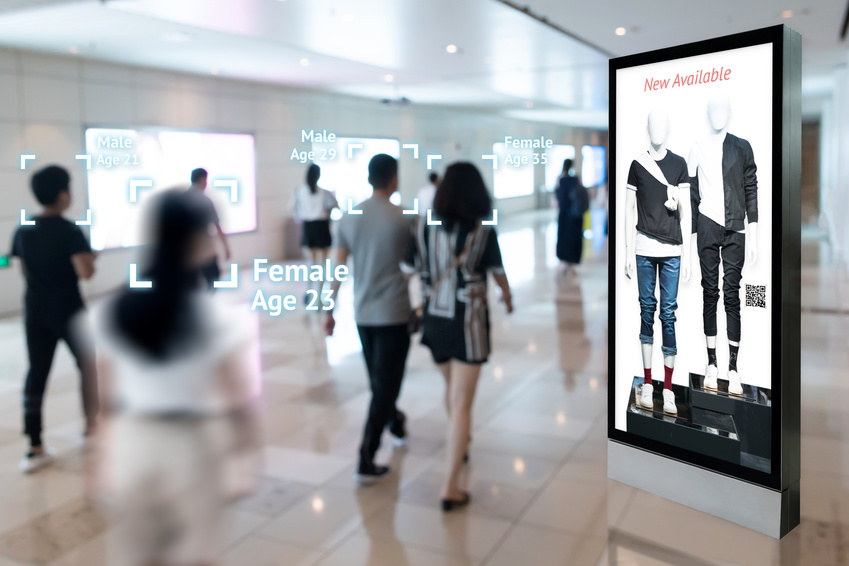Anonymous Video Analytics, Facial Recognition and Privacy Concerns

The Guardian published an article today called “Are you being scanned – How facial recognition technology follows you, even as you shop“. The article suggests that if you shop at certain malls, you may have been scanned and recorded by hidden cameras built into the centres’ digital advertising billboards. In the last year, there have also been a few articles on this topic in Canada and there is some confusion about what is actually being collected and stored using cameras built into digital advertising billboards.
These cameras may be using Anonymous Video Analytics (“AVA”) which is more of a facial detection or characterization technology. They may not be recording the image of the individuals passing by the billboard. The data may be being automatically translated into demographic information (i.e. gender and age estimates) and mood. This information may be useful when managing a mall, including for advertisers who may be interested to know what type of clientele can be found in the mall at a given time (i.e. young adults on a Friday night, etc). This type of technology is less intrusive than facial recognition technology in the sense that facial information is not recorded and the information gathered could technically be collected by an individual sitting beside the billboard, taking notes.
However, there are still privacy concerns with this type of technology. People passing near a billboard may be treated differently based on their characteristics (for example, men and women may be presented with different types of ads, young parents may receive customized offers, etc.). Ann Cavoukian who published Anonymous Video Analytics (AVA) technology and privacy in 2011 raised the point that “face pattern detection technology ensures consumer anonymity, but the technology is nonetheless aggregating data on consumer behaviors in the settings where it is deployed.”
Last September, the Future of Privacy Forum published the infographic Understanding Facial Detection, Characterization, and Recognition Technologies along with Privacy Principles for Facial Recognition Technology in Consumer Applications. The graphic is a very useful tool that summarizes the key distinctions between facial scanning technologies. Digital billboards used in malls are likely using facial characterization technology, where no personal information is typically retained even if these technologies “can inform businesses whether individuals are smiling or frowning, male or female, and old or young.”
Amongst other recommendations, Cavoukian and the FPF are recommending transparency (i.e. notice) as a key requirement as well as recommending that data collected using these technologies should not be used in any type of discriminatory activities.
When reading about smart digital billboards able to personalize ads for shoppers passing by, it may be difficult not to think of the famous futuristic billboard scene from Minority Report. Distinguishing between facial detection and facial recognition technologies is useful to properly address privacy concerns relating to smart digital billboards.
This content has been updated on February 25, 2019 at 15 h 22 min.